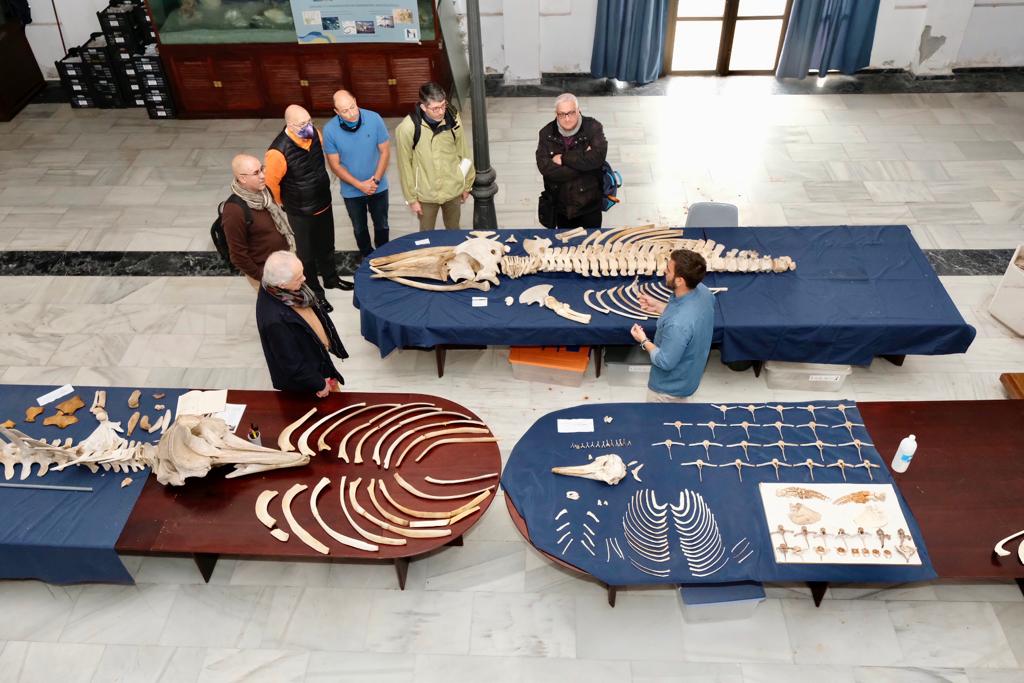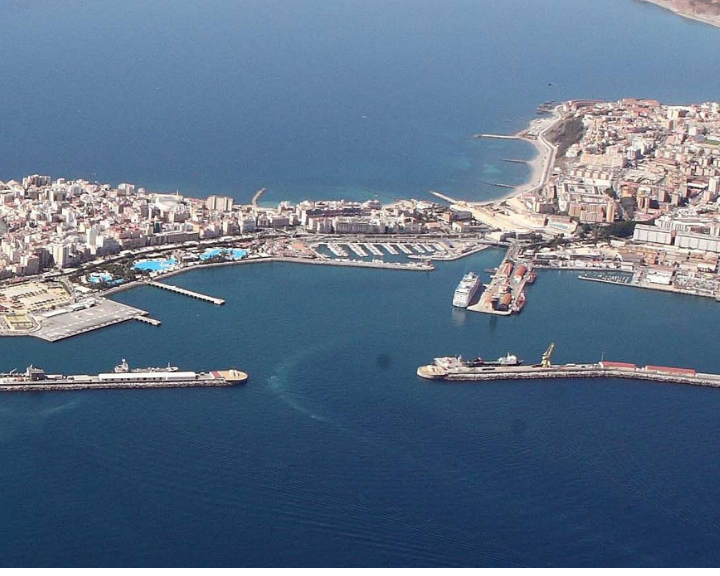AIVP – There are areas of high ecological value, belonging to the European Natura 2000 Network, within a radius of 3 km in the territory of the Port of Ceuta. Protecting terrestrial and marine biodiversity is a major challenge for the port, which has undertaken various actions to tackle it. The port is also in total agreement with Objective 10 “Protecting biodiversity” of AIVP Agenda 2030, to which it is a signatory. We have therefore arranged an interview to discuss it with Cristina Molina Ferrie, Head of Environment y Jorge Vidal Madrigal, Head of the Conservation, Safety and Environment Division of the Ceuta Port Authority.
CEUTA Port Authority has been a member of AIVP since 2019
AIVP – In 2005, the Spanish State Ports organisation established a programme of recommendations to encourage ports to minimise the impact of maritime infrastructure on the water quality in port zones. Can you tell us more about this methodological tool and how you apply it to your infrastructure?
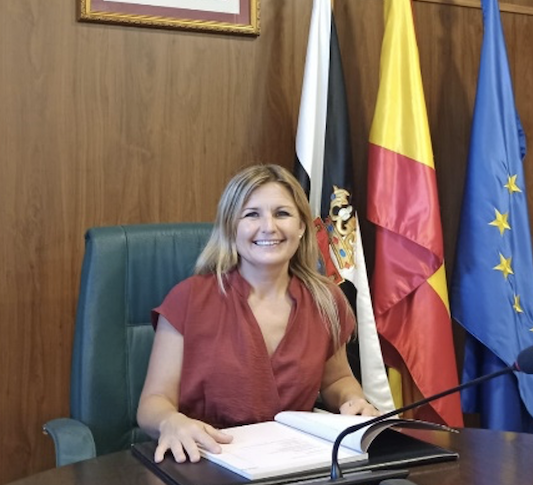
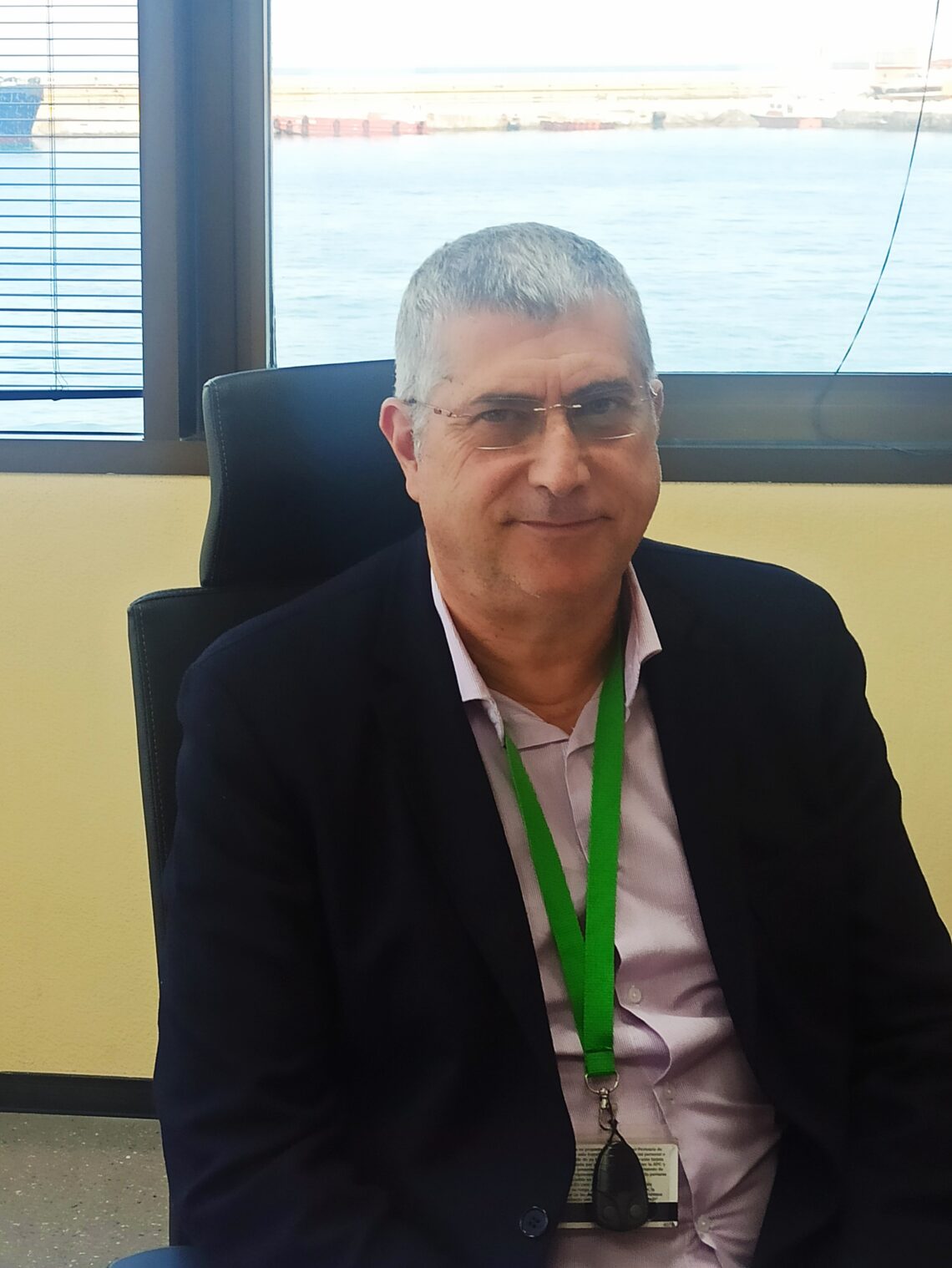
Since 2008, Ceuta Port Authority has been carrying out studies and analyses of the water quality in the port area. This work started with the “Ceuta Port Water Quality Study”.
The study laid down the basis for the “Sentry Stations” that now exist. Six stations were established, in locations that have been maintained over time, and a methodology has been applied of continuous monitoring of bioindicators, principally macrobenthic components, in order to evaluate their ecological structure, composition and abundance of species, and associations; and also oceanographic values, principally temperature and chlorophyll A in suspension.
These studies received a boost in 2009, when a series of Environmental Vigilance Programmes were introduced with the aim of controlling impacts on the environment resulting from dredging and construction operations. Furthermore, in addition to controlling port waters, we started controlling other variables such as microbiological characterisation, turbidity, and shoreline dynamics parameters; and in 2010 we added oceanographic study of physical and chemical variables in both Zone I and Zone II with continuous measurement probes. We also detect points where tipping and pollution are occurring.
These actions, carried out constantly to achieve continuous improvement, allowed us to generate a methodological basis on which to start rapid adaptation to the ROM 5.1-13 Maritime Works Recommendations (Quality of shore waters in port areas) as early as 2013. That same year, the port developed a system of UGAPs (Port Water Management Units) based on the methodology described in the Recommendations document, and a cartographical database to which environmental data continue to be added.
Since then, the controls described previously have been supplemented by periodic controls of the chemical quality of the water and sediment; and improved equipment has been installed for continuous capture of physical and chemical data.
In recent years, our port water quality controls have been more stringent than the ROM recommendations; using remote detection by satellite with very high resolution, we have started control of port waters for parameters like temperature, chlorophyll in suspension and turbidity, and we have added sensors for continuous measurement of dissolved oxygen.
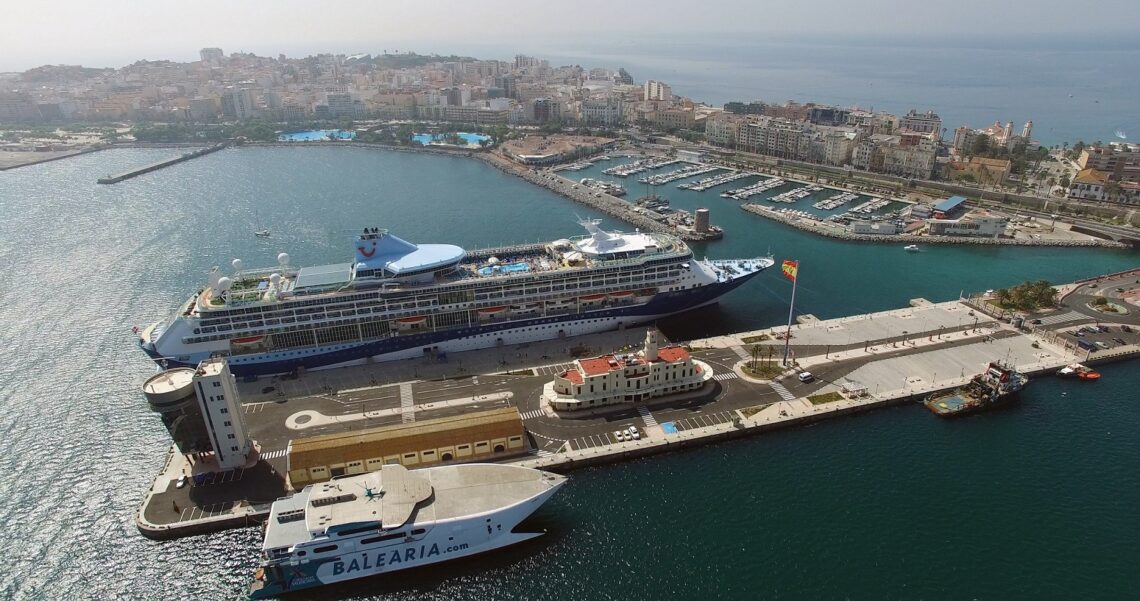
AIVP – Your organisation has started a programme of “Sentry Stations” to control and monitor port water quality. What are its objectives and contents?
The Sentry Stations system consists of the establishment of a pioneering environmental monitoring methodology based on control of bioindicators. These bioindicators include species whose ecological characteristics, uniqueness and sensitivity to disturbance are such as to enable them to demonstrate the conditions existing in the medium.
The benthic sampling at each station is based on a count of all the species included in ten sampling squares; five for each zone (photophilic or sciaphilous esciáfica). From these we obtain a series of data which are subjected to statistical analysis at the end of each year. Furthermore we measure the population stability based on the Relative Dominance Index (RDI), which gives a weighting of the losses and gains of the species evaluated in the benthic territory. This index gives a result in a range from -1 to +1 and serves to show significant changes in the stations over time which may be related with variations in the capacity for growth of one species in comparison with another. The index is only applicable to the most representative and easily measured encrusting species in terms of ecological cover.
Station number 5, in Zone II, receives different treatment as it is included in the Mediterranean coral monitoring programme, which establishes the methodology for evaluating coral communities.
The analyses carried out also combine descriptions of the benthic bionome and the general ecology of port seabeds with a series of indices and numerical proportions based on the species, habitats, abundance and degree of naturalness that they present, following the guidelines laid down in the scientific project to create marine protected areas all round the Mediterranean coast.
The wealth of species, or taxonomic diversity, is calculated by adding up the totals of all the species found. Those found in very small areas are separated from those found along the whole length of the transect. The abundance of species in very small areas is estimated from the percentage cover of the different species photographed in the square used for our ecological study.
The diversity of species is calculated using the Margalef Index, which especially favours the number of species present in a habitat Mindex=S-1/lnN. In other words, it is a quotient whose numerator is the total number of species recorded at a station, minus one, divided by the Napierian logarithm of the total abundance of the individuals. However, to achieve better comparison of the zones we need to find a quotient between the Margalef Index and the number of habitats.
Tables are also included of interesting species, assessing their abundance at each station and estimating a stable value of 3 (the maximum) for each. These are species that are considered of special value on account of their heritage value (inclusion in international agreements, the Spanish or European catalogue, relict status, structural capacity or rarity value). They include, for example, Patella ferruginea, Elisella paraplexauroides, Charonia lampas and Astroides calycularis, which are present in abundance in some of the stations in the Port of Ceuta.
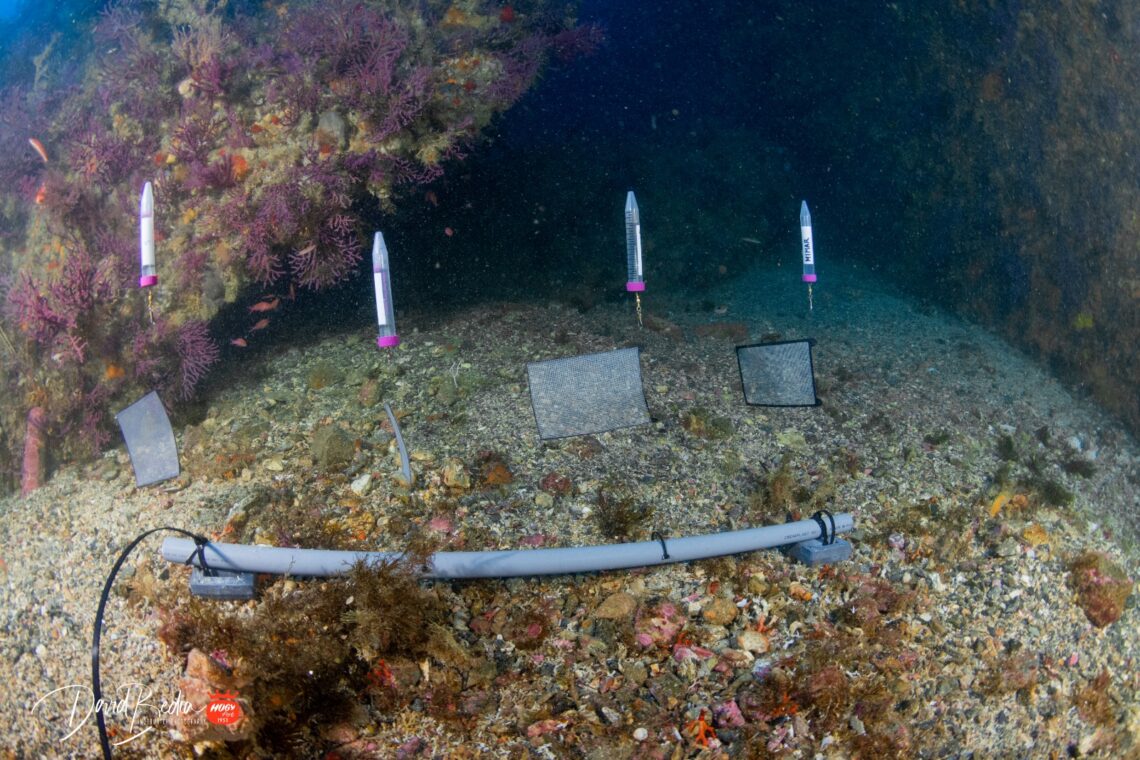
AIVP – Four years after the start-up of these sentry stations, how are they rated? And what actions have they led you to introduce or plan for the short or medium term to protect and/or restore Biodiversity?
Since we started the sentry stations, they have provided very important information for management of the port surroundings, as they are indicators of disruptive phenomena occurring in aquatic habitats that might otherwise pass undetected. They also enable us to monitor specific actions, such as construction and dredging.
Our port contains high quality benthic communities that deserve to be treated properly. We are achieving this with the use of these stations and the control and monitoring programme that I mentioned before. Nevertheless, despite the undeniable quality of the port medium, we have detected problems derived from sedimentation and contamination with faecal matter. These major impacts vulgarise the benthos of the port in Zone I and raise the level of benthic stress, as is reflected in our analyses of data from the stations, and the conclusions and recommendations that we extract. To improve this situation, it is the city that needs to become aware of these impacts and encourage programmes for separating sewage from rainwater. This separation, and investment in their old pumping stations and infrastructure, will prevent the escape of faecal matter every time it rains in the city, and reduce problems of silting, pollution and deterioration of the benthos in port seabeds. Thanks to the sentry stations, we know that the ecological quality of the whole of Zone I is in a stationary condition, with a few setbacks in the conservation of benthic communities; and that to improve the quality of the seabed in Zone I, we need to invest in the clean-up infrastructure described previously.
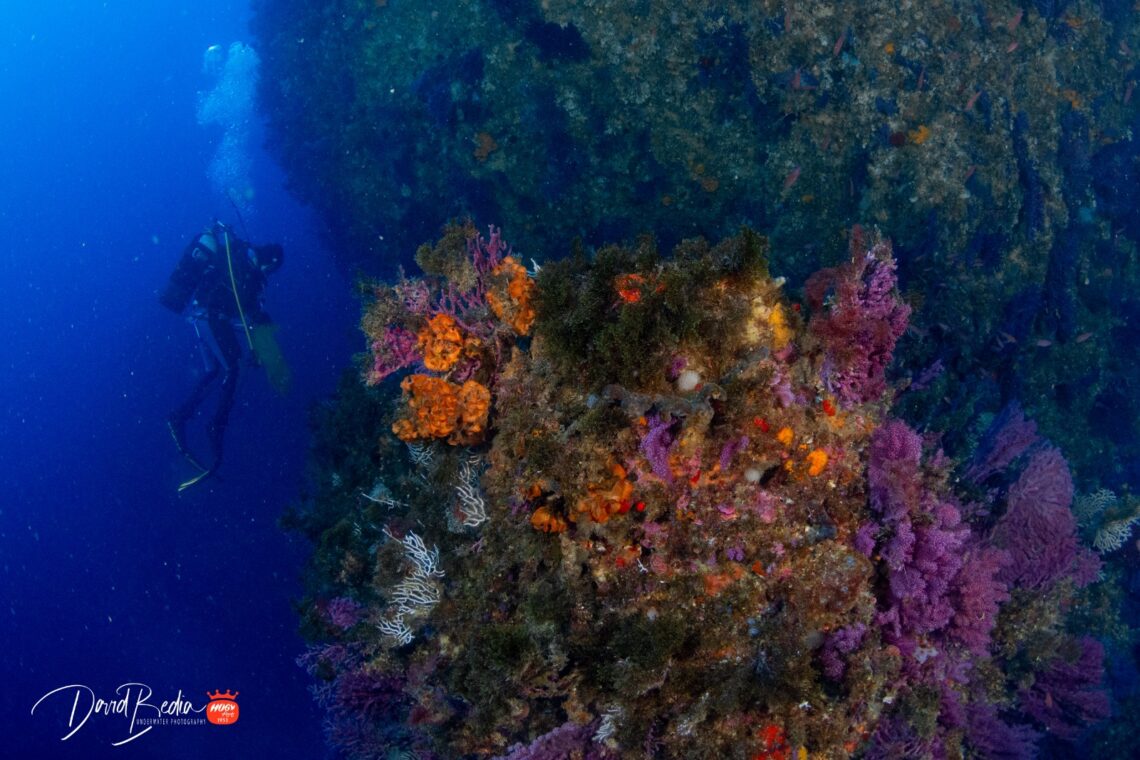
AIVP – Apart from protecting the local fauna, it is sometimes necessary to control the presence of certain species. In the last two years the Port Authority has used a hawking service to control the presence of seagulls, which has been necesary for reasons of health and safety. Can you comment on how this service has worked and how it helps to improve port-city relations?
In the Meeting of Experts with the Fauna Committee held on 14 March 2019, the aircraft pilots who attended expressed their concern over the presence of seagulls in the area of España Wharf. This zone, which is within the area of responsibility of Ceuta Port Authority, is part of the aircraft approach and departure circuit. It is also likely to harbour large numbers of birds, creating an air safety risk around the Heliport.
At the same meeting it was also expressly commented that it would be a good thing to establish a series of agreements and reactivate the defence measures for the Heliport, and assess their effectiveness after a period of around 6 months. The agreements referred to are based mainly on evaluation of two measures: EXP5 Hawking flights, and CAP1 Selective culling of yellow-legged gulls. In addition to these actions, it was also agreed to strengthen requirements for notification and reporting of fauna-related incidents at the Heliport; to pass on information about the Port Authority’s actions to mitigate the seagull problem; and to maintain coordination with the City of Ceuta on any actions that it takes in response to aviation risks in critical areas for operations.
On completion of the evaluation period, on 24 October 2019, an extraordinary meeting of the Fauna Committee was held in Ceuta Heliport, at which new agreements were established in view of the ineffectiveness of the reactivated measures. One of these was to work on coordination between the Heliport and the Port Authority to use a hawking service in the areas where a risk to operational safety exists, extending from España Wharf to Levante Wharf, with the Heliport as its epicentre. This would allow a single authorisation by the Autonomous City to cover the whole service properly, either exclusively by the Heliport (AENA), or by two fully coordinated services (one contracted by AENA and the other by the Port Authority). The Authorisation would be in the name of AENA.
Finally, in view of the problem of the yellow-legged gull (Larus michahellis), and given the involvement of port areas for which Ceuta Port Authority (APC) is responsible, as they do not form part of the heliport concession, APC proposed to assess an initial pilot scheme for a period of 5 months using a hawking service simultaneously, and in coordination, with the service used in the Heliport.
Now that we are close to the end date of the test period established initially, the service has proved to be fully effective from the moment it was introduced. The result has been a reduction in the number of notifications and reports of fauna-related incidents at the Heliport, and therefore in the risks to operating safety. Furthermore, the problem in the area of España Wharf of dirt, persistent smells and unhygenic conditions caused by these birds has disappeared. These problems required the constant presence of cleaning staff which will no longer be necessary.
In view of the results, it is considered indispensible to continue the hawking service for a longer period, in order to promote the permanent removal of the species, which will also minimise the air safety risks around the Heliport. At present the service is contracted for two years, with the possibility of two extensions of one year each, so it is covered until 2025.
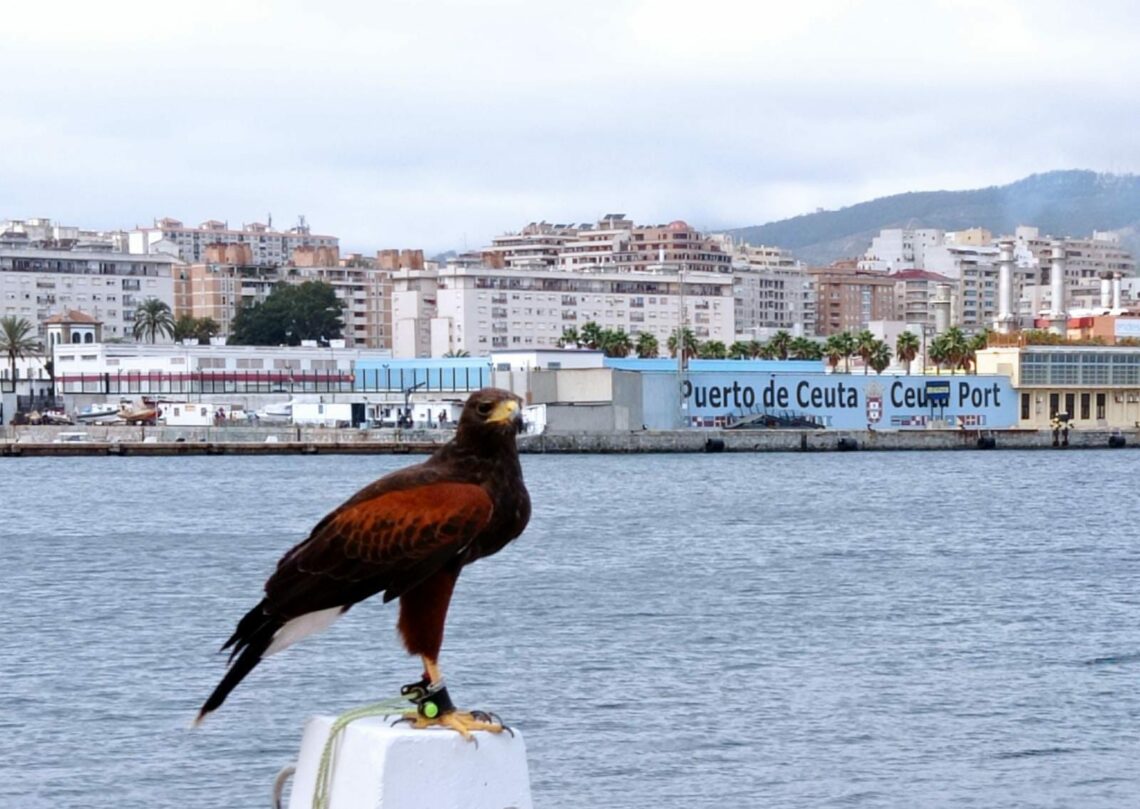
AIVP – Protecting biodiversity also means raising public awareness. Your organisation supports the “Museum of the Sea Foundation” in Ceuta. What is the main motivation for this cooperation? Can you give us one or two examples of actions that have been carried out with the Foundation?
Ceuta Port Authority has a close relationship with the Ceuta Museum of the Sea Foundation, as an entity that forms the backbone of the principal conservation measures, studies and public information actions about Ceuta’s marine environment.
APC supports the Foundation in its awareness activities, including dissemination of the port’s environmental values, but also those of neighbouring environments. The activities include particularly visits by schools, institutes and university students to the Foundation’s premises in the port, and visits by Foundation personnel to schools. Another important area of awareness activities is providing information about the marine tetrapods of Ceuta; these activities are much appreciated by the population and include exhibitions of the skeletons of big cetaceans in the city, and the preparation of books and guides.
In the area of conservation, APC collaborates with the Ceuta Museum of the Sea Foundation and other local conservation bodies to protect our marine environment. These collaborations have translated, during recent decades, into the creation of a Community Interest Site (LIC) in port waters, called LIC del Monte Hacho, and a proposal to create two more Protected Areas inside the Port Services Zone, related with the INTEMARES Project.
Finally, APC collaborates with the Foundation to support marine research for the Ceuta region, with special emphasis on science for the conservation of marine species and habitats.
